Forums
- Forums
- Duggy's Reference Hangar
- IJAAF Library
- KAWANISHI H8K
KAWANISHI H8K
Post a reply
- Go to Previous topic
- Go to Next topic
- Go to Welcome
- Go to Introduce Yourself
- Go to General Discussion
- Go to Screenshots, Images and Videos
- Go to Off topic
- Go to Works in Progress
- Go to Skinning Tips / Tutorials
- Go to Skin Requests
- Go to IJAAF Library
- Go to Luftwaffe Library
- Go to RAF Library
- Go to USAAF / USN Library
- Go to Misc Library
- Go to The Ops Room
- Go to Made in Germany
- Go to Campaigns and Missions
- Go to Works in Progress
- Go to Juri's Air-Raid Shelter
- Go to Campaigns and Missions
- Go to Works in Progress
- Go to Skinpacks
- Go to External Projects Discussion
- Go to Books & Resources
-
6 years agoThu Nov 11 2021, 04:23pmDuggy
 Main AdminIn 1938, even as the H6K was going into service, Kawanishi was working on its replacement. The Japanese Navy wanted a flying boat that was 30% faster, had 50% greater range, and better defensive capability. The result was a clean, high-wing monoplane design. The prototype, which was designated "H8K1", was originally intended to have retractable floats, but these were deleted in favor of fixed floats to save weight before the prototype was completed on 31 December 1940. It was powered by four 1,140 kW (1,530 HP) Mitsubishi MK4A Kasei ("Mars") 11 engines, a 14-cylinder two-row air-cooled radial design based on Pratt & Whitney technology.
Main AdminIn 1938, even as the H6K was going into service, Kawanishi was working on its replacement. The Japanese Navy wanted a flying boat that was 30% faster, had 50% greater range, and better defensive capability. The result was a clean, high-wing monoplane design. The prototype, which was designated "H8K1", was originally intended to have retractable floats, but these were deleted in favor of fixed floats to save weight before the prototype was completed on 31 December 1940. It was powered by four 1,140 kW (1,530 HP) Mitsubishi MK4A Kasei ("Mars") 11 engines, a 14-cylinder two-row air-cooled radial design based on Pratt & Whitney technology.
The prototype proved to be very unstable on the water and prone to "porpoising". Many changes were made to improve its seaworthiness, including an 11% increase in the depth of the hull. Two preproduction machines followed the prototype. They used the same engine fit but incorporated further hull improvements, and the third machine was fitted with an enlarged tailfin.
The engineers worked the bugs out and the type was formally put into production in 1941 under the designation "H8K1 Type 2 Model 11". Production models of the H8K1 had a crew of ten, and were fitted a Type 99 Model 1 20-millimeter cannon in dorsal and tail turrets. It is unclear if the turrets were power driven. Single 7.7-millimeter Type 92 machine guns were placed in blisters on each side of the fuselage, as well as in the nose and a ventral hatch.
Offensive payload was eight 250-kilogram (550-pound) bombs or two 800-kilogram (1,764-pound) torpedoes, carried under the wings. Late production machines had MK4B Kasei 12 engines, with technical improvements but no change in power. The H8K's water handling was inferior to that of the H6K, but its flight performance was much superior.
The H8K1 had eight small fuel tanks in the wings and six large tanks in the fuselage. The wing tanks were unprotected, while the fuselage tanks were partly self-sealing and had a carbon dioxide fire extinguishing system. If punctured, the fuselage fuel tanks drained into a bilge where the fuel could be pumped back into undamaged fuel tanks. The relative vulnerability and small size of the wing tanks suggests that they were to be drained first in a mission, which would have also improved the aircraft's handling.
The first serious operational use of the H8K took place in March 1942, in an attempt to perform a second air raid on Pearl Harbor. The three H8K1s involved were based in the Marshall Islands, which were roughly 3,700 kilometers (2,000 nautical miles) from the island of Oahu. That was beyond the round-trip range even of the H8K1, and so the flying boats were refueled by submarine at a waypoint. However, on arrival at the target, the aircraft found the target area socked in with heavy clouds, and had to call off the attack. An attempt to try again a few months later was frustrated by the presence of American forces at the refueling point. This operation ended up being a great deal of effort expended to no good end; even if the raid had gone off as planned, it would have been a futile pinprick to American forces, making it a poor use of resources.
The 18th H8K flying boat was built with uprated MK4Q Kasei 22 engines, each with 1,380 kW (1,850 HP), plus a modified tailfin and increased fuel capacity, and was given the new designation "H8K2 Type 2 Model 12".
The H8K2 also featured much improved defensive armament, replacing the 7.7-millimeter gun in the nose and each fuselage blister with a 20-millimeter cannon. Flexibly-mounted 7.7-millimeter guns were also added to each side of the fuselage and each side of the cockpit. That gave an impressive total defensive armament of five 20-millimeter cannon and five 7.7-millimeter guns. Given its heavy defensive armament, some Allied pilots nicknamed the H8K2 the "Flying Porcupine". Late production machines had longwave Mark VI Model 1 ocean search radar, with towel-rack transmitter antennas along the nose and Yagi-style receiving antennas under the wings.
In the meantime, work had been proceeding on a transport variant of the H8K. The first prototype was modified for this role, being fitted with MK4Q Kasei 22 engines, and was given the designation "H8K1-L". It was followed by 36 similar new-build "H8K2-L" transports, produced between 1943 and 1945.
The transport version was named "Seiku (Calm Sky)", and had accommodations on two decks for 29 passengers, riding in relative comfort, or 64 troops, with less comfortable seating. Most of the hull tanks were removed to allow the passenger / troop accommodations, and defensive armament was reduced to a 13-millimeter Type 2 machine gun in the nose and a 20-millimeter cannon in the tail.
Two experimental variants of the H8K were also developed, but not put into production. The "H8K3" was a modified late-production H8K2 that featured retractable wingtip floats, a retractable dorsal turret, and 20-millimeter cannon mounted in a hatch on each side of the fuselage, replacing the blisters. The hatch arrangement was also featured on late-production H6K2s.
Two H8K3s were built. They were later re-engined with more powerful MK4T-B Kasei 25b engines with 1,360 kW (1,825 HP each), to be redesignated "H8K4". A transport version, the "H8K4-L", was considered, but by that time the military situation was becoming desperate, priority was being given to the production of fighters for the defense of the home islands, and no more H8Ks were built.
H8K PRODUCTION TOTALS
H8K1 1 prototype
H8K1 2 preproduction machines
H8K1 14 initial production variant
H8K1-L - transport prototype, modified from H8K1 proto
H8K2 112 main production variant, more power & guns
H8K2-L 36 transport version
H8K3 2 retractable floats, turret
H8K4 - both H8K3s refitted with uprated engines
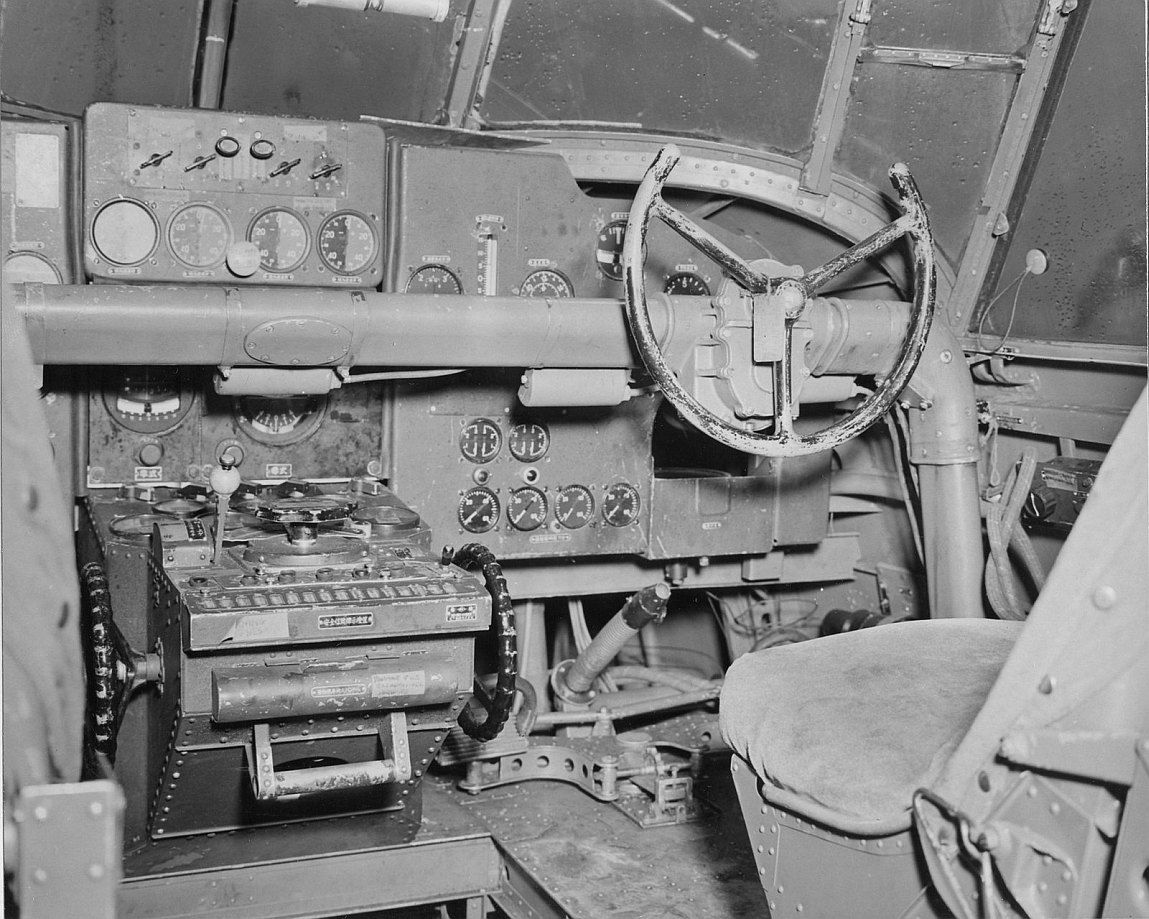
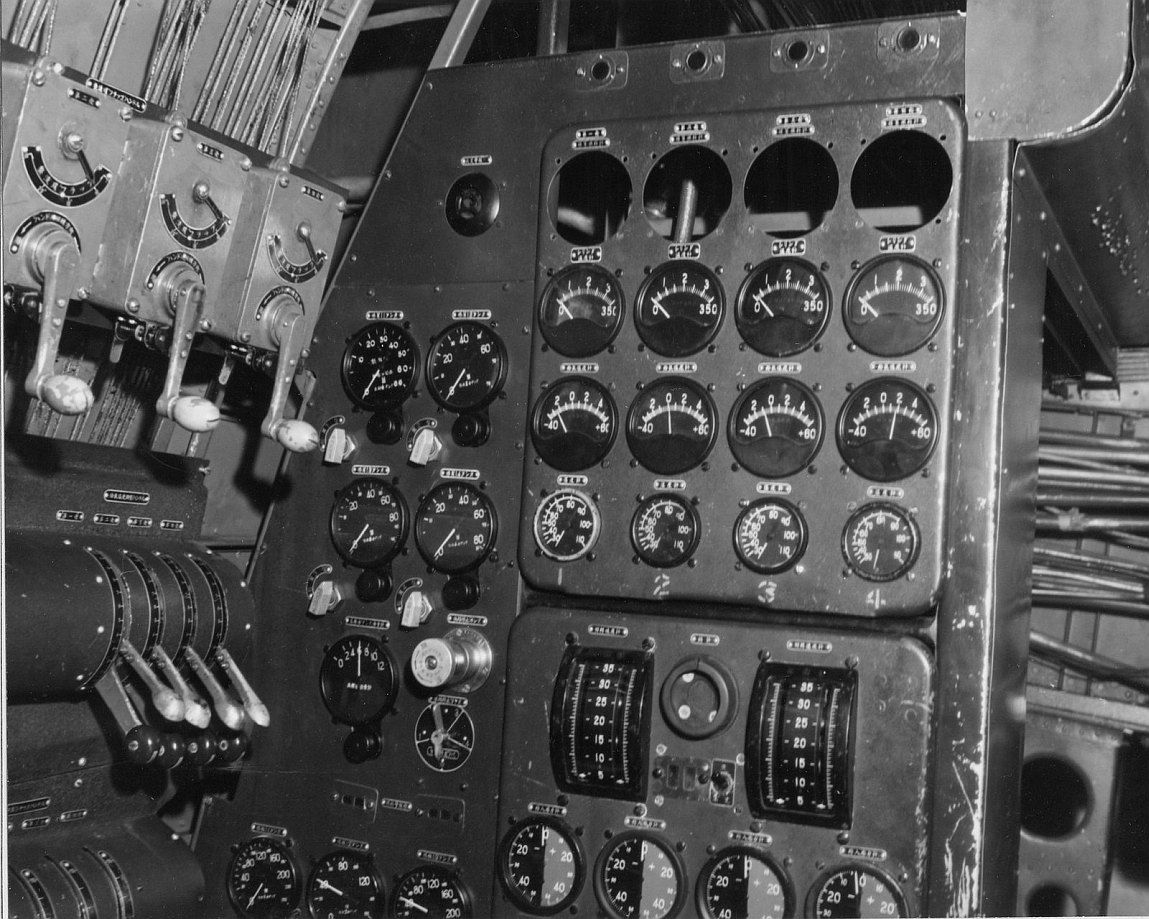
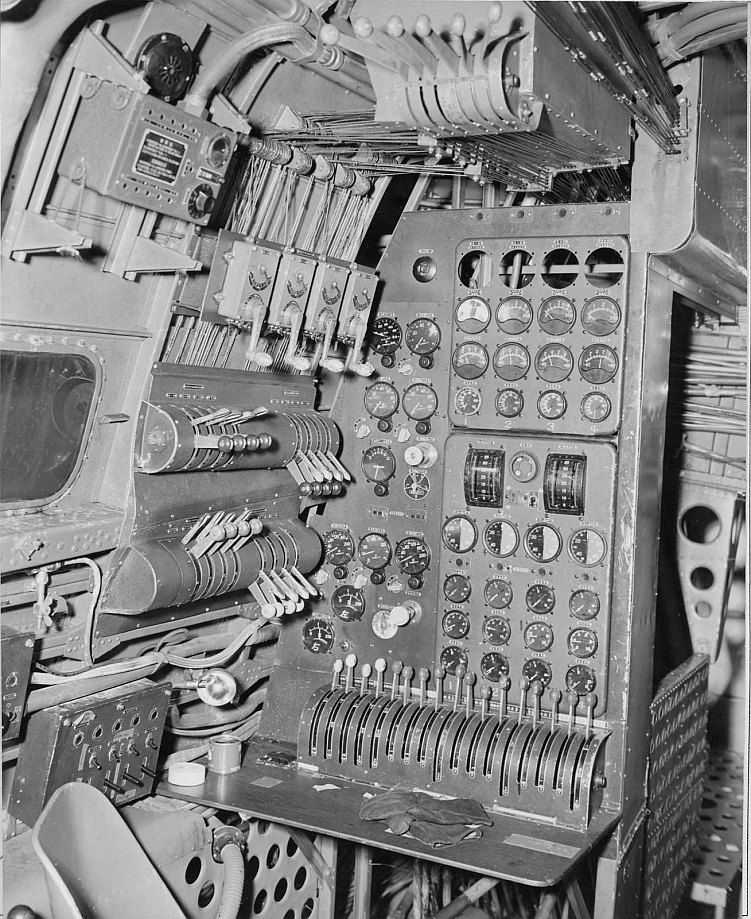
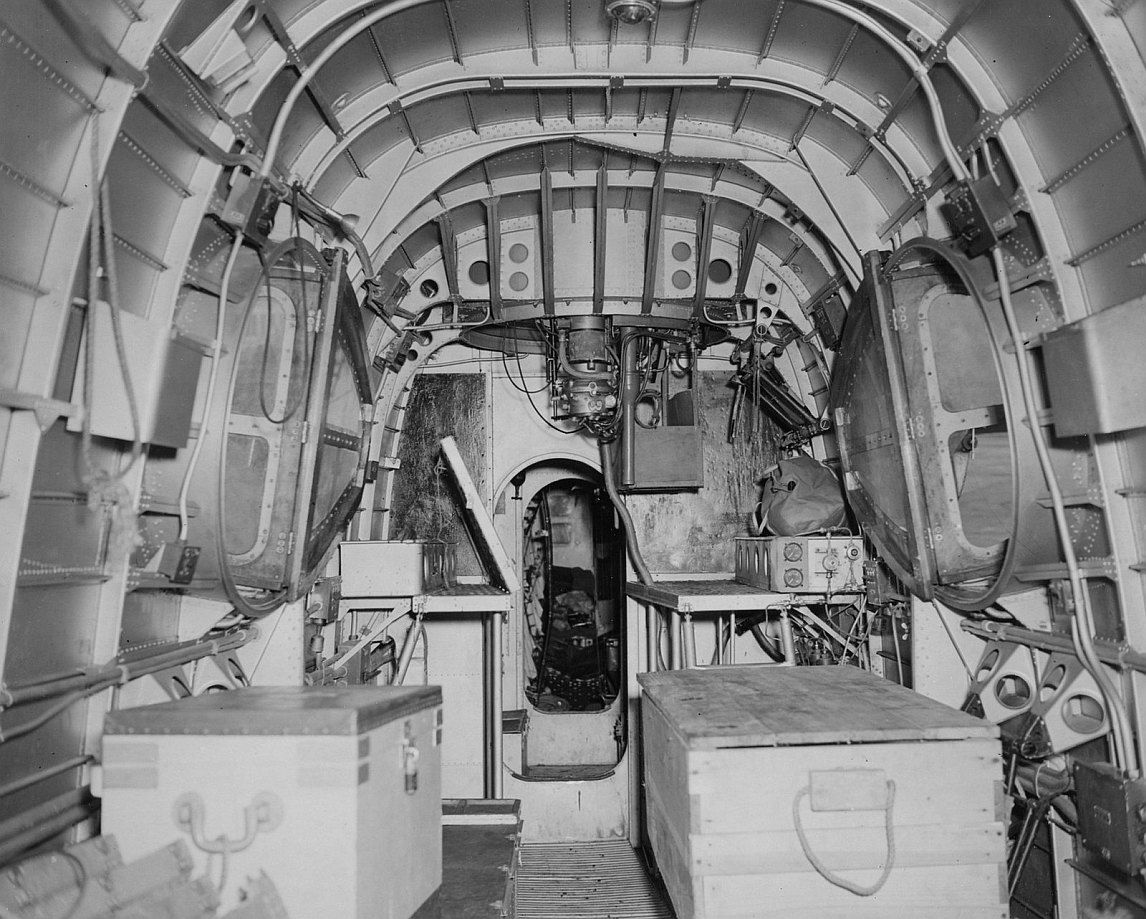


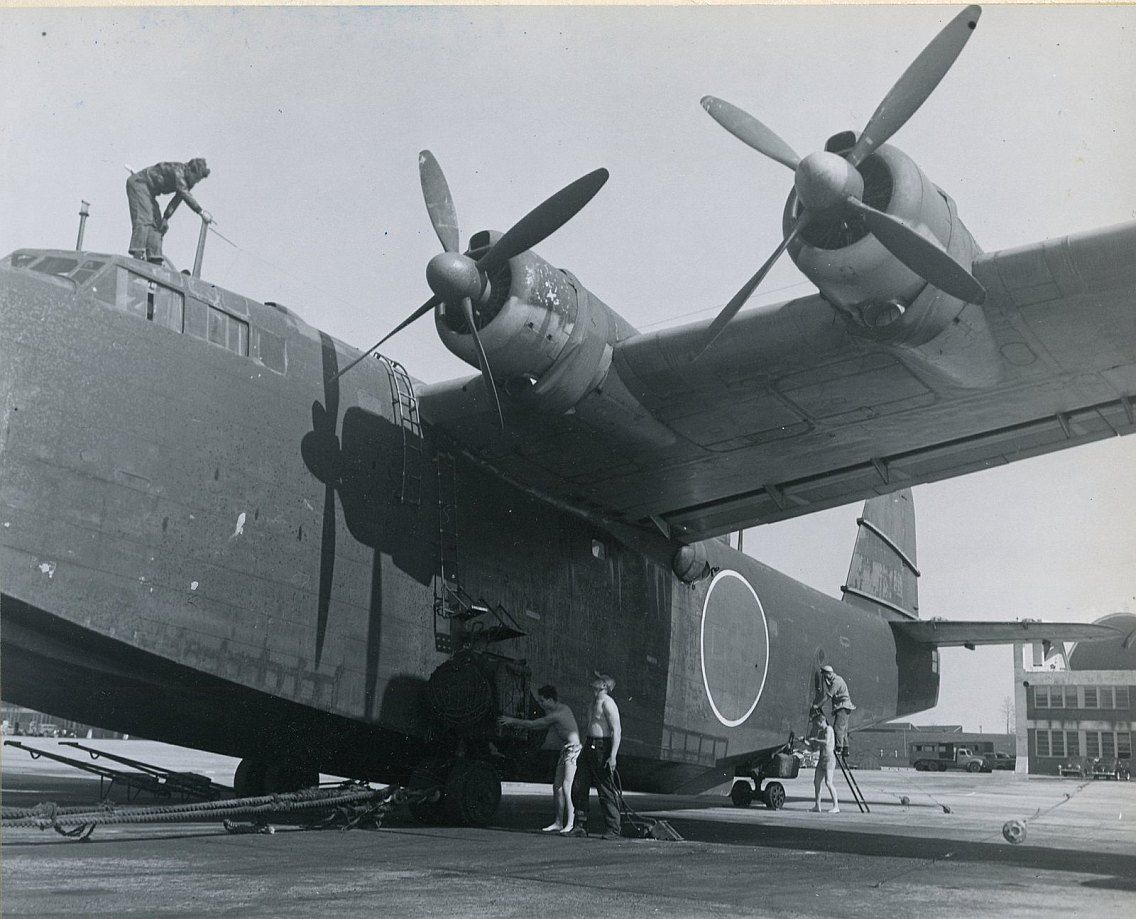
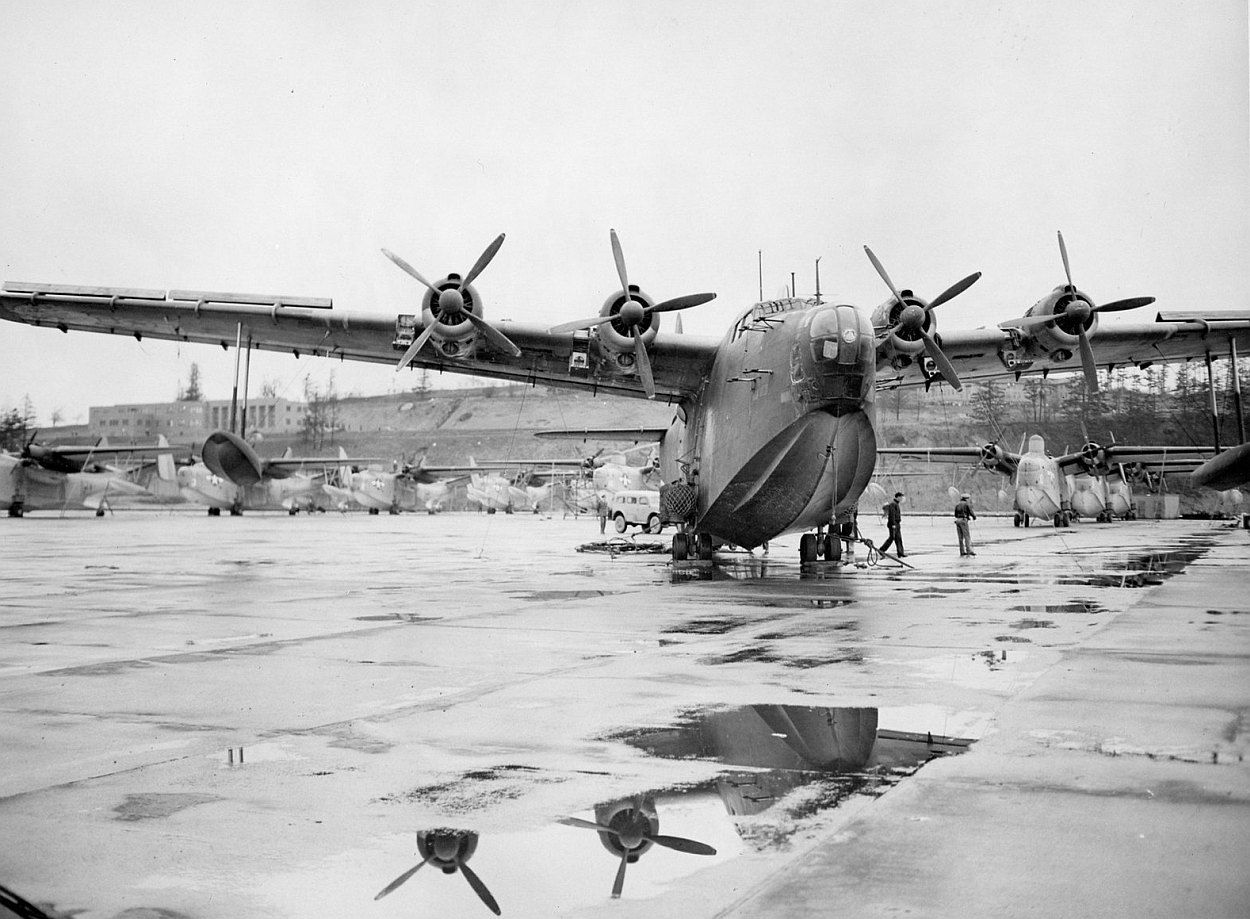

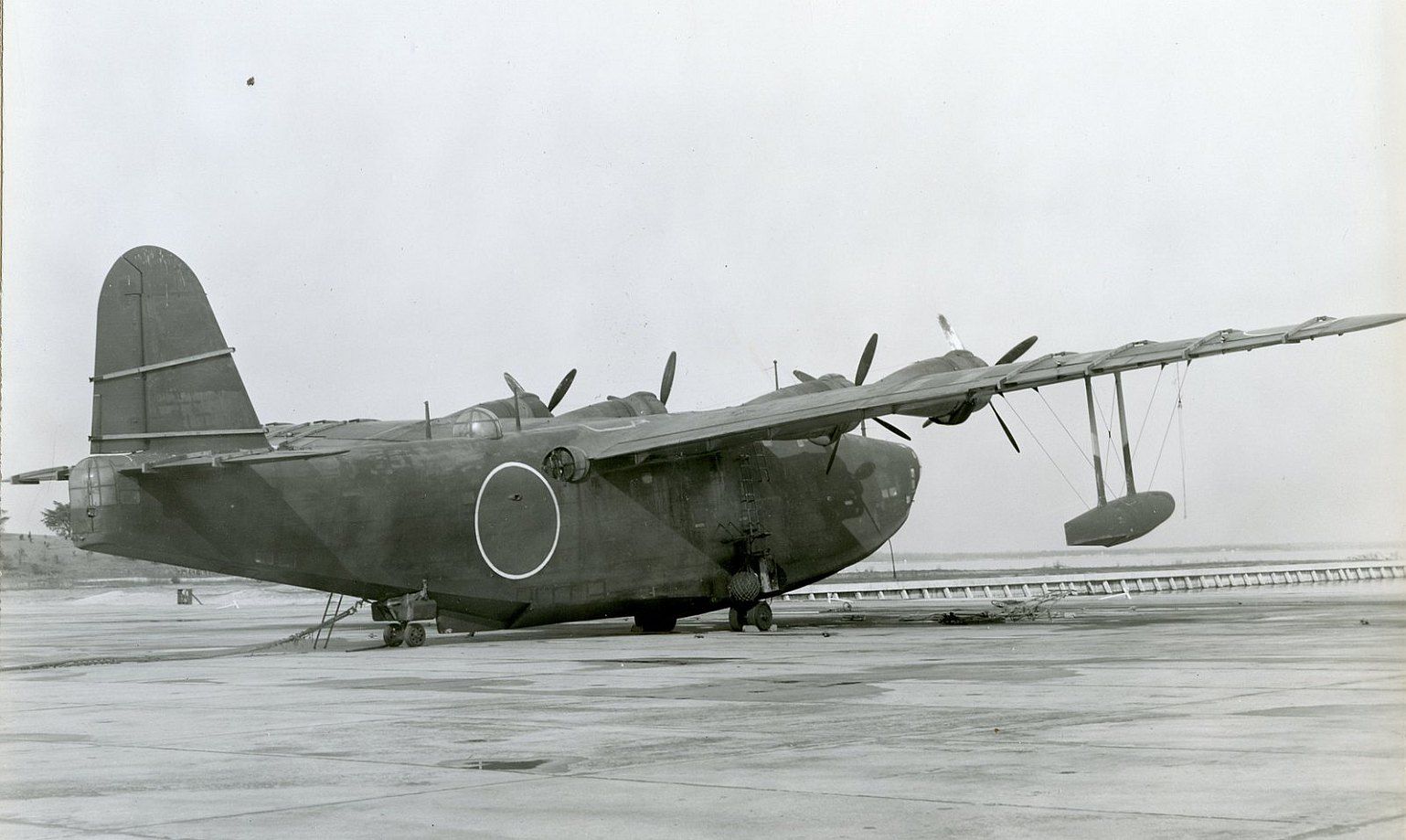


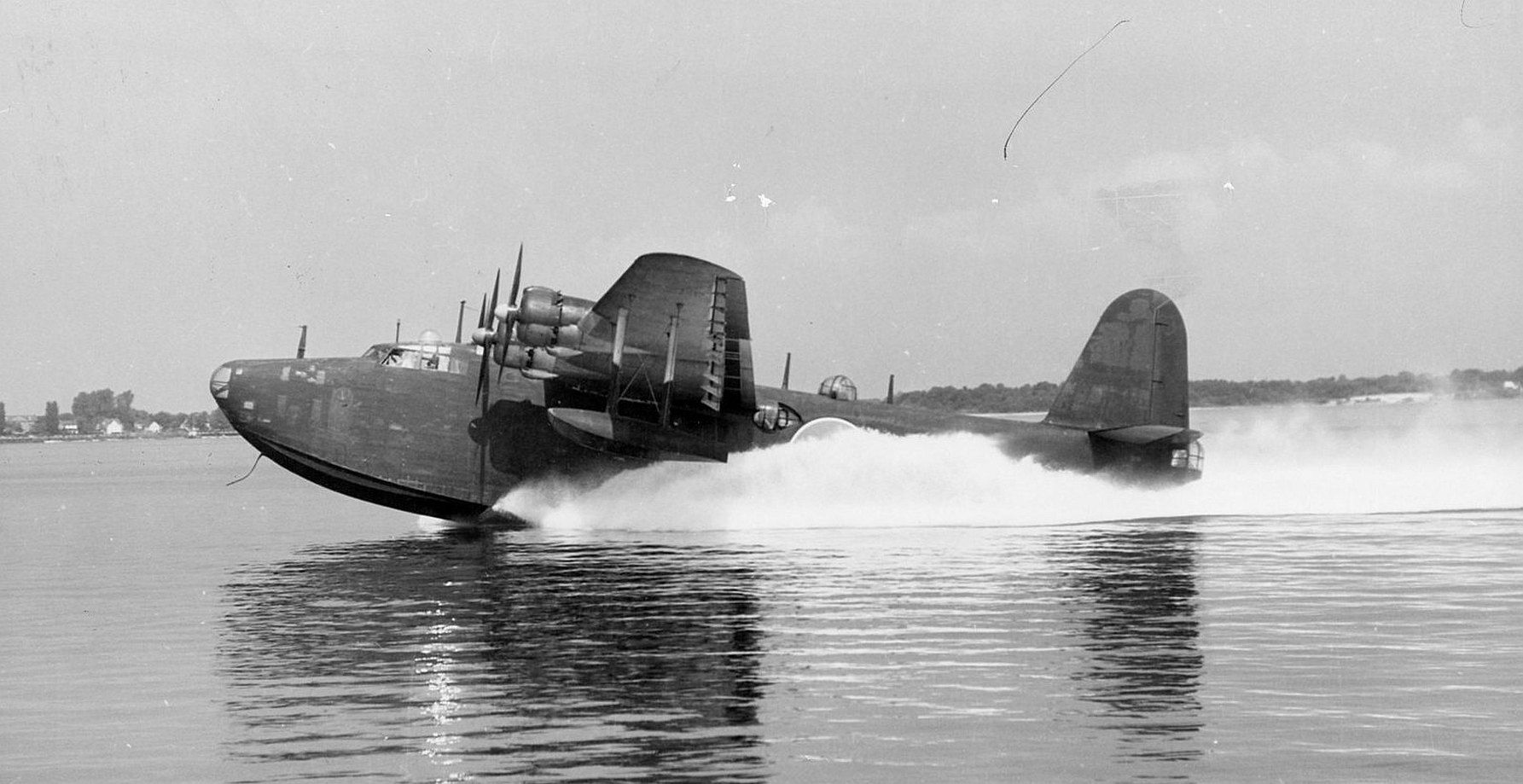
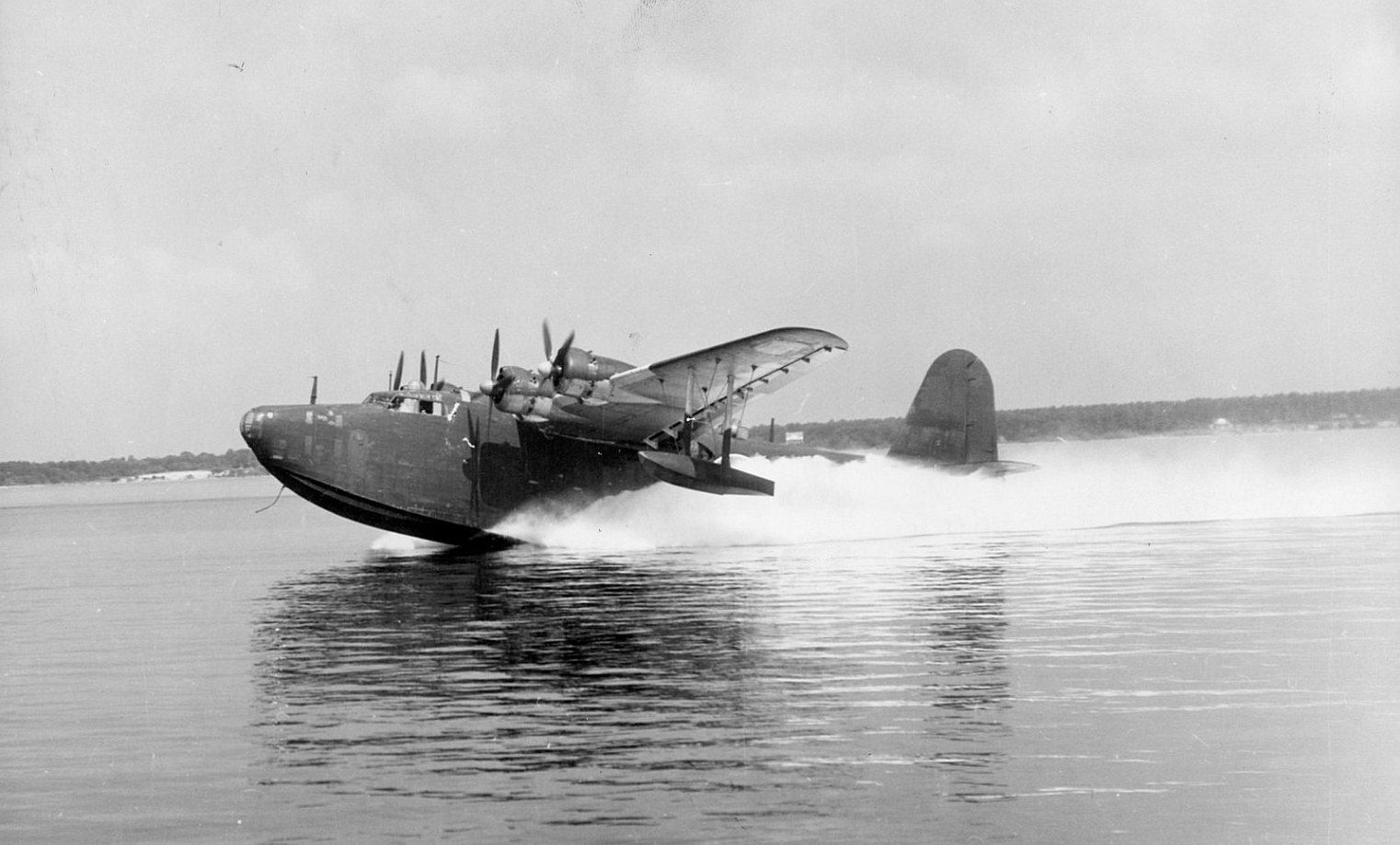
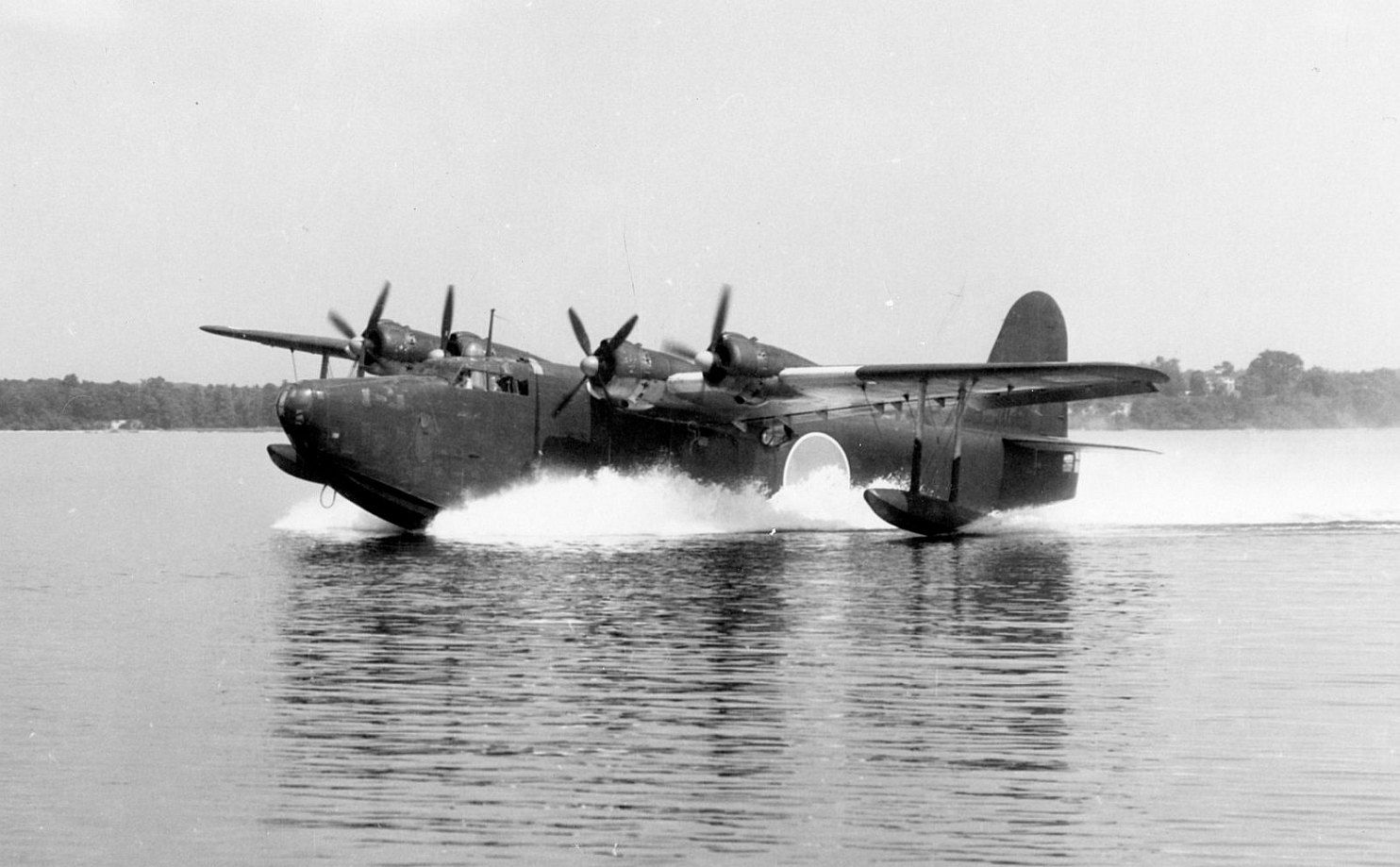
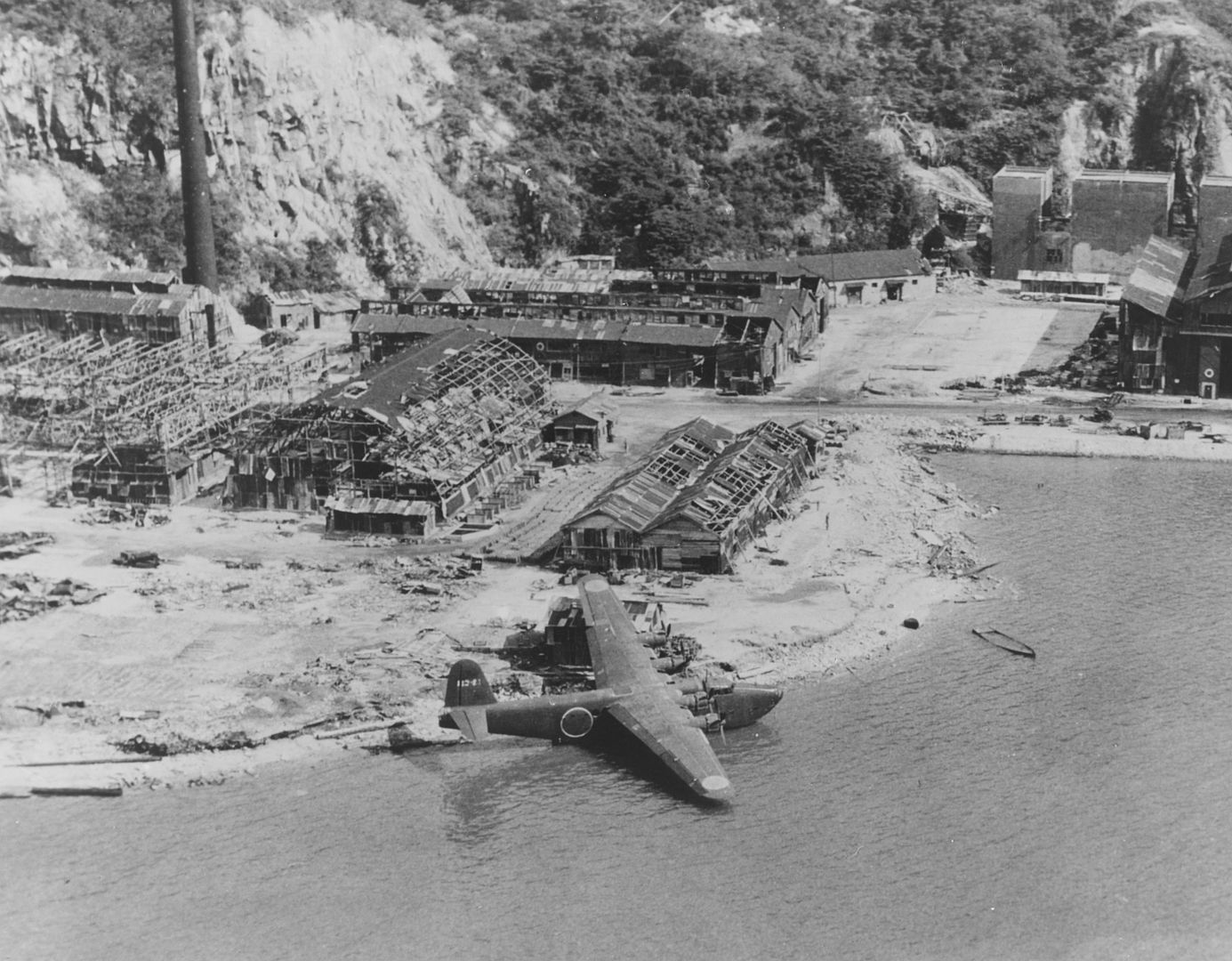

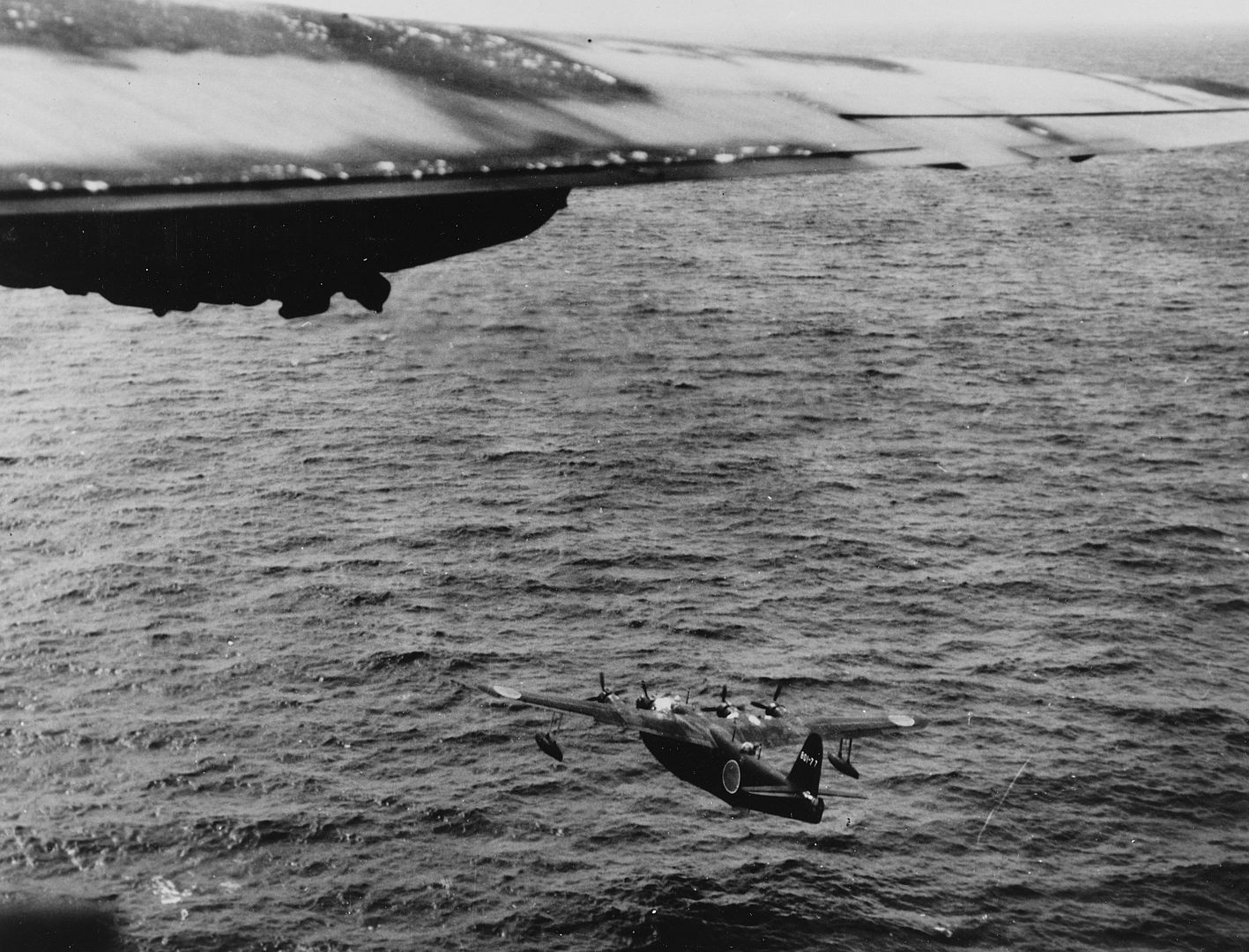

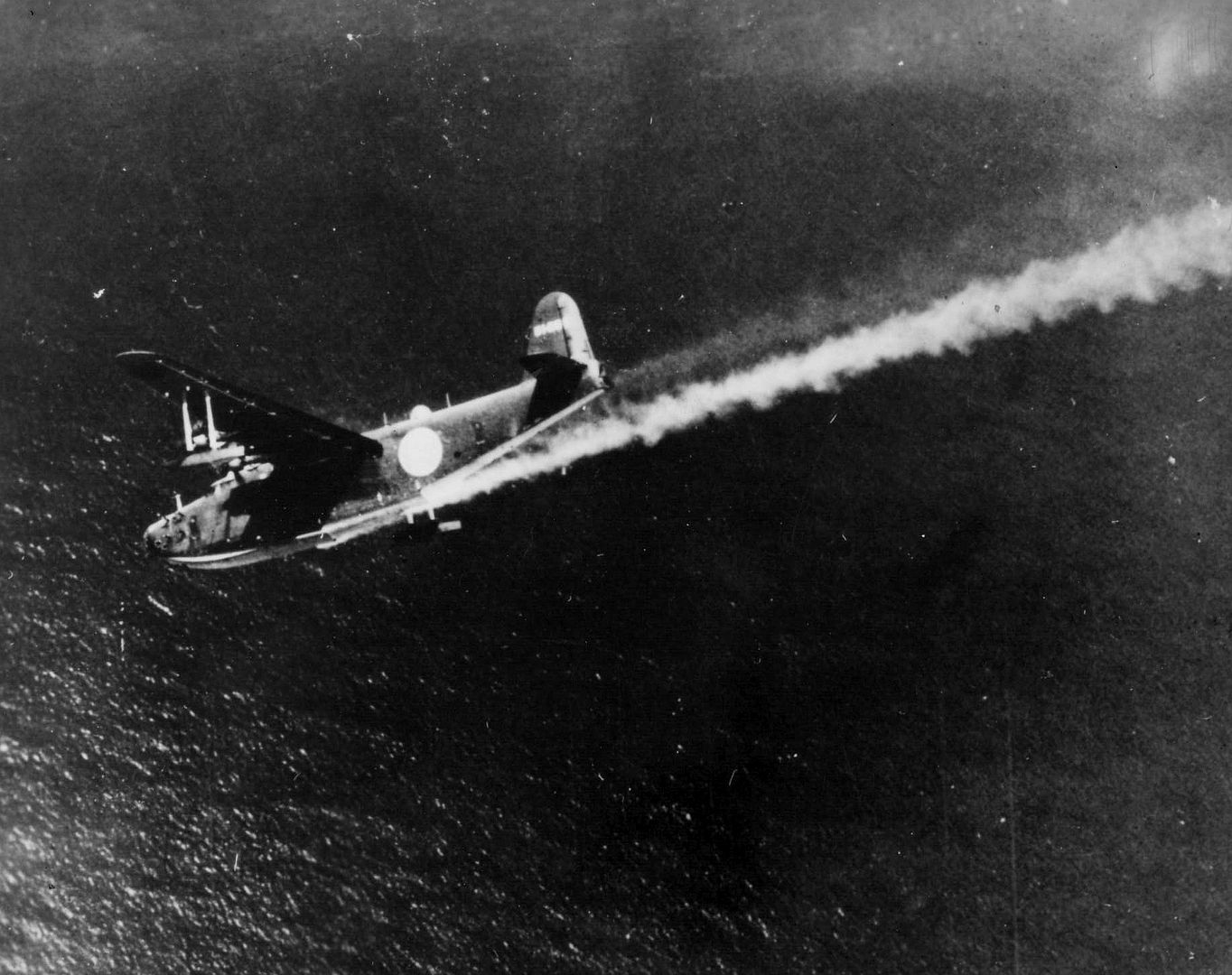
Specifications (Kawanishi H8K2)
General characteristics
Crew: 10
Length: 28.13 m (92 ft 3 in)
Wingspan: 38 m (124 ft 8 in)
Height: 9.15 m (30 ft 0 in)
Wing area: 160 m2 (1,700 sq ft)
Empty weight: 18,380 kg (40,521 lb)
Gross weight: 24,500 kg (54,013 lb)
Max takeoff weight: 32,500 kg (71,650 lb)
Powerplant: ? Mitsubishi MK4Q Kasei 22 14-cylinder air-cooled radial piston engines, 1,380 kW (1,850 hp) for take-off 1,253 kW (1,680 hp) at 2,100 m (6,900 ft)
1,148 kW (1,540 hp) at 5,500 m (18,000 ft)
Performance
Maximum speed: 467 km/h (290 mph, 252 kn) at 5,000 m (16,000 ft)
Cruise speed: 296 km/h (184 mph, 160 kn) at 4,000 m (13,000 ft)
Ferry range: 7,152 km (4,444 mi, 3,862 nmi)
Service ceiling: 8,850 m (29,040 ft)
Time to altitude: 5,000 m (16,000 ft) in 10 minutes 12 seconds
Wing loading: 153.1 kg/m2 (31.4 lb/sq ft)
Power/mass: 0.225 kW/kg (0.137 hp/lb)
Armament
Guns:
5? 20 mm (0.787 in) Type 99 Mark 1 machine gun (one each in bow, dorsal, and tail turrets, plus one each in two waist blisters)
5? 7.7 mm (0.303 in) Type 92 machine guns in fuselage hatches
Bombs: 2? 800 kg (1,800 lb) torpedoes or 2,000 kg (4,400 lb) of bombs or depth charges
Post a reply
- Go to Previous topic
- Go to Next topic
- Go to Welcome
- Go to Introduce Yourself
- Go to General Discussion
- Go to Screenshots, Images and Videos
- Go to Off topic
- Go to Works in Progress
- Go to Skinning Tips / Tutorials
- Go to Skin Requests
- Go to IJAAF Library
- Go to Luftwaffe Library
- Go to RAF Library
- Go to USAAF / USN Library
- Go to Misc Library
- Go to The Ops Room
- Go to Made in Germany
- Go to Campaigns and Missions
- Go to Works in Progress
- Go to Juri's Air-Raid Shelter
- Go to Campaigns and Missions
- Go to Works in Progress
- Go to Skinpacks
- Go to External Projects Discussion
- Go to Books & Resources
